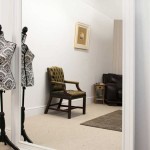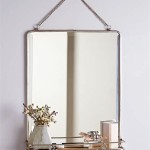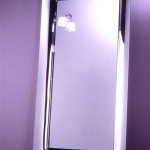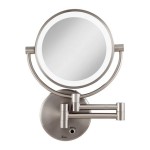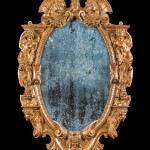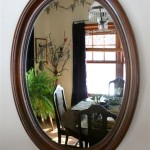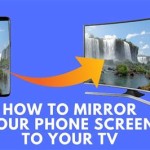How to Mirror iPhone to Mac with Bluetooth
Mirroring an iPhone screen to a Mac offers several advantages, from presenting slides and demos on a larger display to enjoying media content on a bigger screen. While Bluetooth represents a common wireless technology present in both iPhones and Macs, it's important to understand its limitations regarding screen mirroring. Direct screen mirroring from an iPhone to a Mac solely via Bluetooth is not supported. Bluetooth's primary function lies in connecting devices for tasks like audio streaming, file transfer, and peripheral control, not for the high-bandwidth demands of screen mirroring. This article explores alternative methods for mirroring an iPhone screen to a Mac, clarifying the role and limitations of Bluetooth in this process.
AirPlay: The Preferred Method for iPhone to Mac Mirroring
Apple's proprietary technology, AirPlay, stands as the recommended and most effective method for mirroring an iPhone screen to a Mac. AirPlay utilizes the local Wi-Fi network to establish a connection between the iPhone and the Mac, ensuring a smooth, high-quality, and lag-free mirroring experience. To utilize AirPlay mirroring, ensure both the iPhone and the Mac are connected to the same Wi-Fi network. Then, access the Control Center on the iPhone, tap the "Screen Mirroring" button, and select the Mac from the list of available devices.
AirPlay offers advantages over other mirroring methods, particularly in streaming video and audio content. Its ability to maintain high resolution and low latency is particularly beneficial for activities like playing games, watching movies, or delivering presentations. Further, AirPlay provides the option of mirroring specific apps, rather than the entire iPhone screen, enhancing user privacy and focusing the presentation.
Using a USB Connection and QuickTime Player
A wired connection via USB cable offers a reliable alternative to AirPlay, particularly suitable for situations where Wi-Fi is unavailable or unstable. Connecting the iPhone to the Mac with a USB cable and utilizing QuickTime Player provides a straightforward mirroring method. Open QuickTime Player on the Mac and select "New Movie Recording" from the File menu. Click the dropdown arrow next to the record button and select the iPhone as the camera and microphone input. The iPhone screen will then be mirrored on the Mac within the QuickTime Player window.
The USB method offers a stable connection and eliminates potential Wi-Fi interference. However, it restricts mobility due to the physical cable connection. It is also crucial to ensure that the iPhone trusts the connected Mac to facilitate proper communication and mirroring functionality.
Third-Party Screen Mirroring Applications
Numerous third-party applications offer screen mirroring capabilities between iPhones and Macs. These applications typically utilize the local network or require a software installation on both devices. While some third-party options offer unique features or cater to specific needs, selecting a reputable application from a trusted source is paramount to ensure security and performance. Carefully examine user reviews and compare features before opting for a third-party solution.
These applications often provide additional functionalities beyond basic screen mirroring, such as recording the mirrored screen, adding annotations, or adjusting the mirroring quality. Users should carefully consider their needs and the specific functionalities offered by different applications when making a selection.
Understanding Bluetooth's Limitations
While Bluetooth provides valuable wireless connectivity for various functionalities between iPhones and Macs, it's essential to recognize its limitations concerning screen mirroring. Bluetooth's bandwidth is insufficient to handle the real-time transmission of video and audio data required for screen mirroring. Consequently, attempts to directly mirror an iPhone to a Mac using only Bluetooth will be unsuccessful.
Bluetooth excels in low-energy data transfer and connecting devices like keyboards, mice, and audio devices. However, its inherent limitations make it unsuitable for the high bandwidth requirements of screen mirroring. Utilizing alternative methods such as AirPlay or a USB connection ensures a more effective and efficient screen mirroring experience.
Choosing the Right Mirroring Method
The optimal mirroring method depends on the specific use case and available resources. For scenarios requiring high-quality streaming, minimal latency, and wireless freedom, AirPlay stands as the preferred choice. When Wi-Fi is unavailable or a stable wired connection is preferable, the USB method with QuickTime Player offers a reliable alternative. Third-party applications can provide additional features and cater to specific user needs but require careful selection and installation.
Understanding the strengths and limitations of each method allows users to make informed decisions and select the most suitable approach for their screen mirroring requirements. By recognizing that direct Bluetooth mirroring is not feasible and exploring the available options, users can effectively leverage the capabilities of their iPhones and Macs for presentations, content consumption, and other screen sharing activities.

Three Ways To Mirror Iphone Mac Easily Successfully

Full Guide How To Mirror Iphone Macbook Bluetooth

Three Ways To Mirror Iphone Mac Easily Successfully

Full Guide How To Mirror Iphone Macbook Bluetooth

Full Guide How To Mirror Iphone Macbook Bluetooth

How To Mirror Iphone Display Macbook Ios 12 Macos Mojave

Full Guide How To Mirror Iphone Macbook Bluetooth

Wireless How To Mirror Iphone Macbook Via Bluetooth

Wireless How To Mirror Iphone Macbook Via Bluetooth

How To Mirror Iphone Pc Via Bluetooth Detailed Guide

